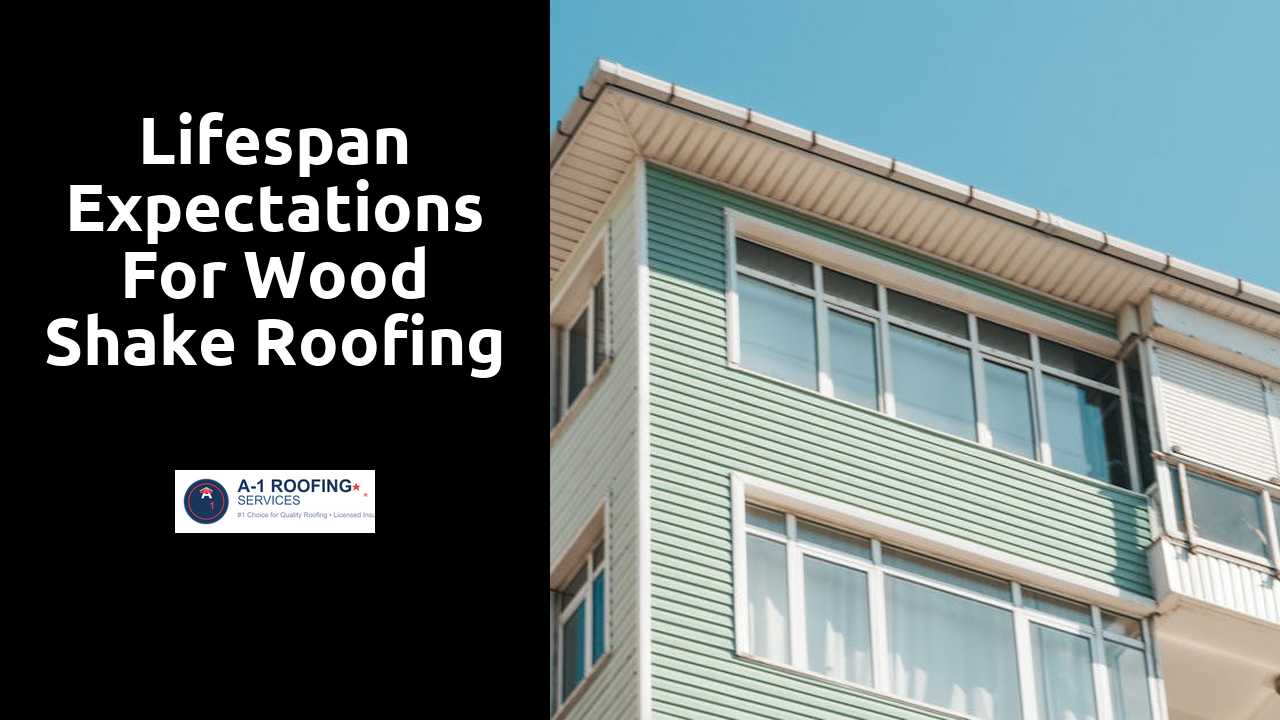
Lifespan Expectations for Wood Shake Roofing
Table Of Contents
Signs of Deterioration
Wood shake roofing is known for its natural beauty and durability, but it does show signs of wear over time. Homeowners should regularly inspect their roofs for curled or cracked shakes, as these indicate potential water infiltration problems. Discoloration can also be a telltale sign of deterioration. Areas with significant black streaks or moss growth signal moisture retention, which can lead to more serious issues if not addressed promptly.
Additionally, the presence of loose or missing shakes can compromise the roof's overall integrity. Windstorms or heavy snow can exacerbate these problems, further increasing the risk of leaks or structural damage. It's essential to conduct routine checks after severe weather events to ensure that the roof remains in good condition. Keeping an eye on these signs can help extend the lifespan of wood shake roofing.
Continue to read this blog post for more great tips.
Identifying Wear and Tear
Homeowners should regularly inspect their wood shake roofs for signs of wear. Look for splintering, curling, or cracking of the shingles as this indicates age and deterioration. Excessive moisture can lead to mold growth, which not only damages the roof but may also pose health risks. Additionally, check for gaps between shakes, as these can allow water intrusion and lead to further issues.
Discoloration is another indicator of potential problems. A significant change in color could signal UV damage or the effects of weathering. Pay attention to the presence of debris or moss, which can trap moisture and accelerate deterioration. Regular maintenance and timely inspections can help identify these issues early, potentially extending the lifespan of the roofing material.
Comparing Wood Shake to Other Roofing Materials
Wood shake roofing offers a distinct aesthetic and a unique set of characteristics compared to other materials such as asphalt shingles, metal, or slate. While asphalt is popular for its cost-effectiveness and ease of installation, it generally has a shorter lifespan, averaging 15 to 30 years. In contrast, wood shake roofs can last up to 30 years or more with proper maintenance. Metal roofs, known for their durability and resistance to severe weather, may outlast wood shakes but often come with a higher upfront cost. Slate roofs provide incredible longevity, sometimes exceeding 100 years, but they are heavier and considerably more expensive than wood shakes.
When evaluating the cost-benefit analysis, wood shake roofing stands out as a mid-range option. The initial investment may be higher than asphalt but lower than slate or certain metal options. Homeowners often appreciate its natural look and insulating properties. The energy efficiency of wood shake contributes to lower heating and cooling costs, making it an appealing choice for those conscious of ecology and aesthetics. Each roofing material has its pros and cons, and the decision should consider budget, climate, and the desired lifespan of the roof.
Cost vs. Lifespan Analysis
When evaluating roofing options, understanding the balance between cost and lifespan is crucial. Wood shake roofing generally has a higher upfront cost than asphalt shingles or metal roofing. However, it often outlasts these alternatives, with a lifespan that can extend beyond 30 years if properly maintained. This longevity can offset the initial expense over time, as fewer replacements lead to savings in labor and materials.
Moreover, factors such as climate, installation quality, and regular maintenance significantly impact the actual lifespan of wood shakes. In regions prone to harsh weather, the durability may be tested more severely. Homeowners may find that investing in proper care, like regular inspections and treatments for pests or mold, can enhance the lifespan, making the overall cost more favorable in the long run.
Benefits of Wood Shake Roofing
Wood shake roofing offers a unique aesthetic appeal, enhancing the overall character of a home. Its natural look blends seamlessly with various architectural styles, from rustic to modern designs. Available in different textures and finishes, wood shakes can complement exterior elements such as siding and landscaping. This versatility allows homeowners to personalize their roofing choices, contributing to a distinctive curb appeal that many other materials cannot match.
In addition to aesthetics, wood shake roofs provide excellent insulation properties. The natural air pockets within the wood help regulate indoor temperatures, which can lead to reduced heating and cooling costs. This energy efficiency is particularly beneficial in varying climates, where temperature fluctuations are common. Furthermore, wood shake roofs can also offer sound insulation benefits, creating a quieter living environment. These combined advantages make wood shakes not only a visually appealing choice but also a practical one for energy-conscious homeowners.
Aesthetic and Energy Efficiency Advantages
Wood shake roofing offers a unique aesthetic appeal that enhances the overall look of a home. The natural variations in the wood grain and texture create a warm, rustic charm that is difficult to replicate with synthetic materials. As the shakes weather, they develop a beautiful silver-gray patina, adding character and depth to the structure. This organic appearance often complements various architectural styles, making it a popular choice for homeowners seeking to achieve a classic or traditional ambiance.
In addition to its visual benefits, wood shake roofing can contribute to energy efficiency. The insulation properties of the wood help regulate temperature, keeping homes cooler in summer and warmer in winter. This natural thermal regulation can reduce reliance on heating and cooling systems, leading to lower energy bills over time. Furthermore, using sustainably sourced wood shakes can enhance a home's eco-friendliness, appealing to environmentally conscious homeowners.
Related Links
Environmental Impact of Using Wood Shake RoofingUnderstanding the Benefits of Wood Shake Roofing